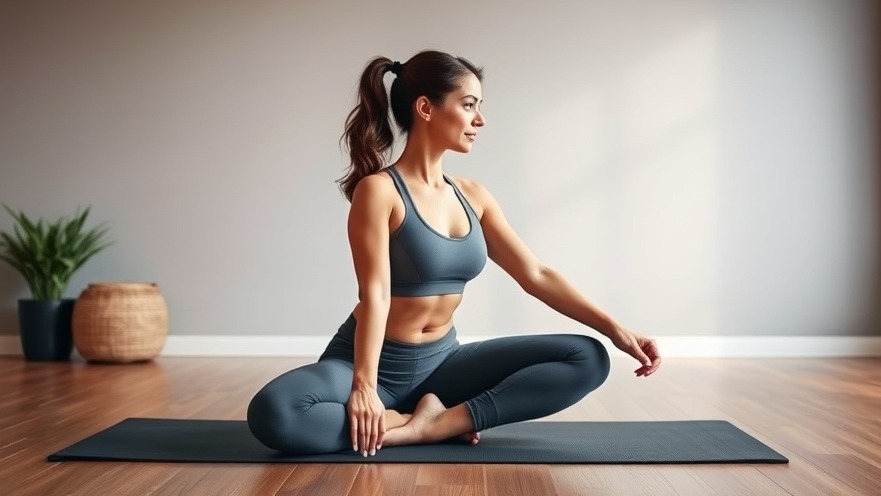
Unleashing the Power of Pilates for Hip Toning
Pilates exercises for hip toning are rapidly gaining popularity as an effective and low-impact solution for those looking to shed extra kilos and sculpt their bodies. With a focus on precise movements that engage deep core muscles, Pilates offers a holistic approach that not only improves physical aesthetics but also supports functional fitness—a major need in today’s high-demand lifestyles.
The Dynamics of Pilates
Originally developed in the early 20th century by German inventor Joseph Pilates, Pilates combines mental and physical health philosophies aimed at enhancing one’s overall well-being. Pilates exercises emphasize core strength, flexibility, balance, and precise alignment, while conducting each move at a controlled pace to maximize effectiveness. As noted in various scientific studies, this method significantly tones the body while reducing the risk of injuries, making it suitable for individuals of all fitness levels.
Why Focus on Hip Toning?
Fat storage around the hips can stem from various factors, including poor diet, sedentary lifestyles, genetics, and even hormonal imbalances. Strengthening hip muscles can lead to improved body posture and alignment, increased mobility, and a better overall physique. Pilates effectively targets these areas, allowing practitioners to enjoy increased flexibility and muscle strength while also contributing to a toned appearance.
15 Effective Pilates Exercises for Hip Toning
If you are ready to dive into Pilates for hip toning, consider incorporating these effective exercises into your routine. Each movement is designed to engage and strengthen your hips while promoting overall stability.
Pelvic Curl: Start on your back with knees bent. Lift your hips one vertebra at a time until forming a straight line from your shoulders to your knees. Lower slowly for 10-12 reps.
Side-lying Leg Lifts: With legs extended and aligned with your spine, lift the top leg straight up, maintaining control while slowly lowering it back down. Repeat for 10-12 lifts.
Bridging: Lie on your back with feet flat and hip-width apart. Engage your core, lift your hips while squeezing your glutes, and lower back down. Aim for 10-15 reps.
Clamshells: Lying on your side with knees bent, keep your feet together and lift the top knee while your feet remain in contact. Return and repeat for 15-20 times on each side.
Side Plank Leg Lifts: From a side plank position, lift the top leg while maintaining core engagement. Lower then lift again, repeating for 10-12 times.
Benefits Beyond Aesthetics
The benefits of Pilates extend beyond simply toning the hips. Regular practice improves posture, reduces back pain, and enhances core strength, leading to better stability for all physical activities. This training style is also highly accessible, making it manageable for individuals across various fitness levels and age groups.
Tips for Maximizing Your Pilates Practice
To truly harness the power of Pilates in your hip toning efforts, consider these practical insights:
Consistency is Key: Regular practice is essential in experiencing the long-term benefits of Pilates. Aim for at least 2-3 sessions a week.
Mind Your Breathing: Focused breathing helps with core activation and deeper muscle engagement, crucial for effective workouts.
Combine with a Balanced Diet: Pair your Pilates sessions with a healthy eating plan to optimize fat loss and muscle gain.
Separating Fact from Fiction
While Pilates is often praised, misconceptions still linger. Some believe it’s solely for women or inadequate for strength training. On the contrary, Pilates is suitable for everyone and, when performed correctly, can significantly improve muscle tone and strength, including among men and seasoned athletes.
Making the Move Towards a Healthier Lifestyle
Incorporating Pilates into your fitness routine not only contributes to hip toning but also supports a healthier and well-rounded lifestyle. The emphasis on core strength and stability aligns with broader fitness goals that encompass overall well-being.
If you’re ready to embark on a transformative journey towards hip toning and improved fitness, consider starting your Pilates practice today. With a host of benefits waiting for you, it’s time to take that step towards a healthier future!
 Add Row
Add Row  Add
Add 




Write A Comment